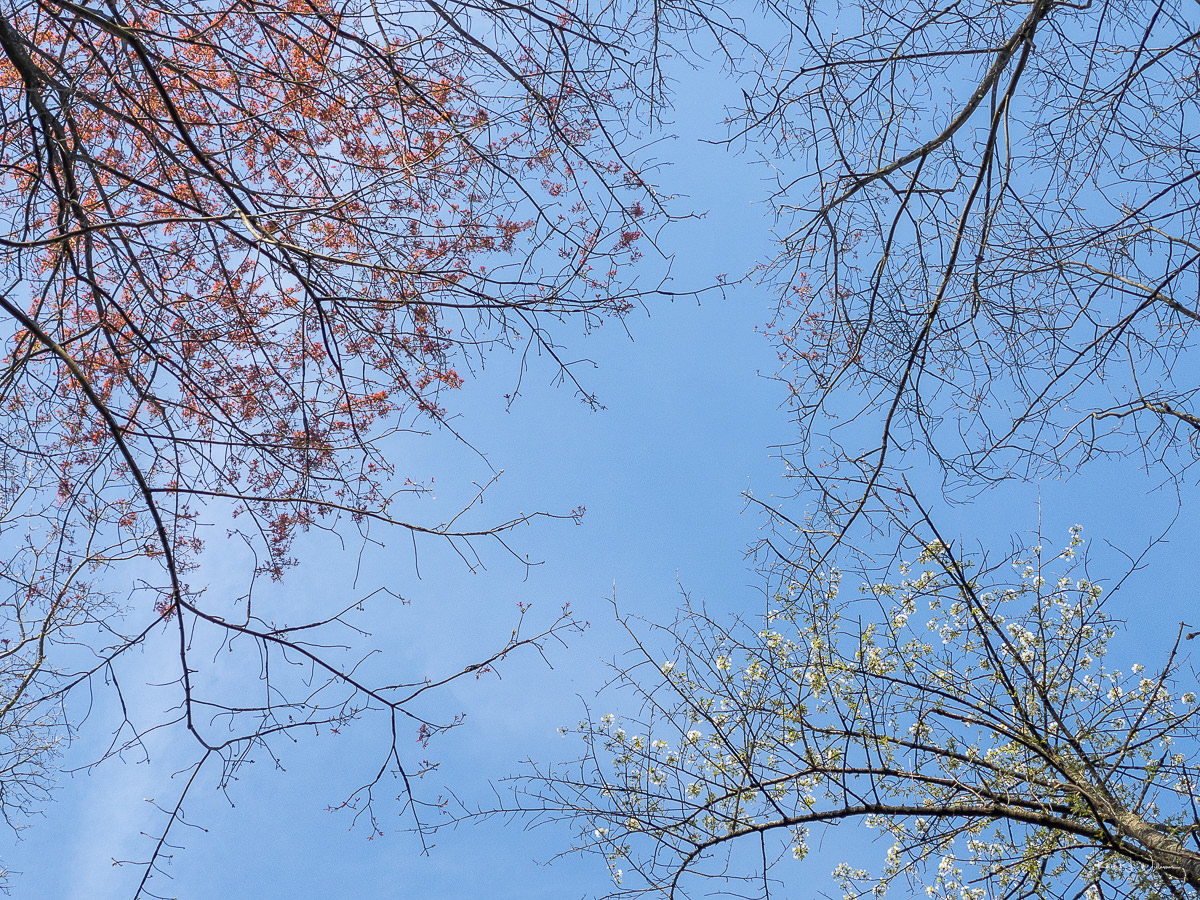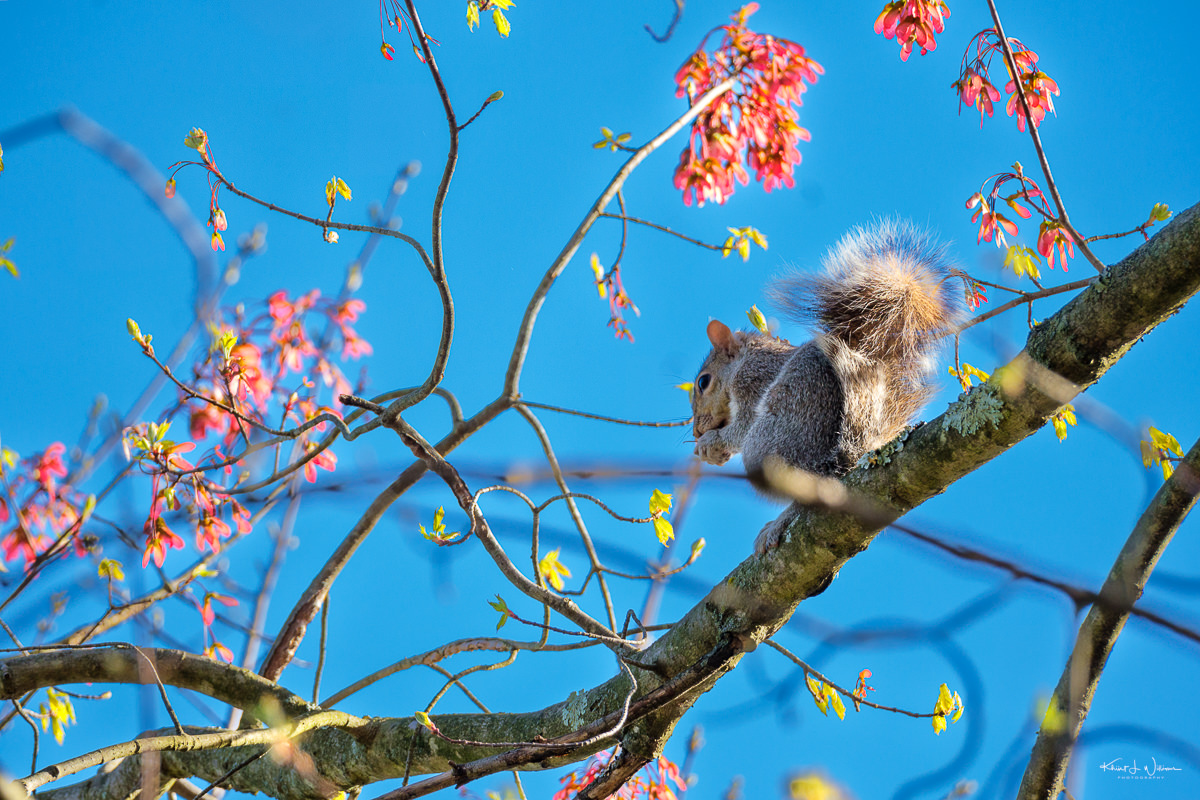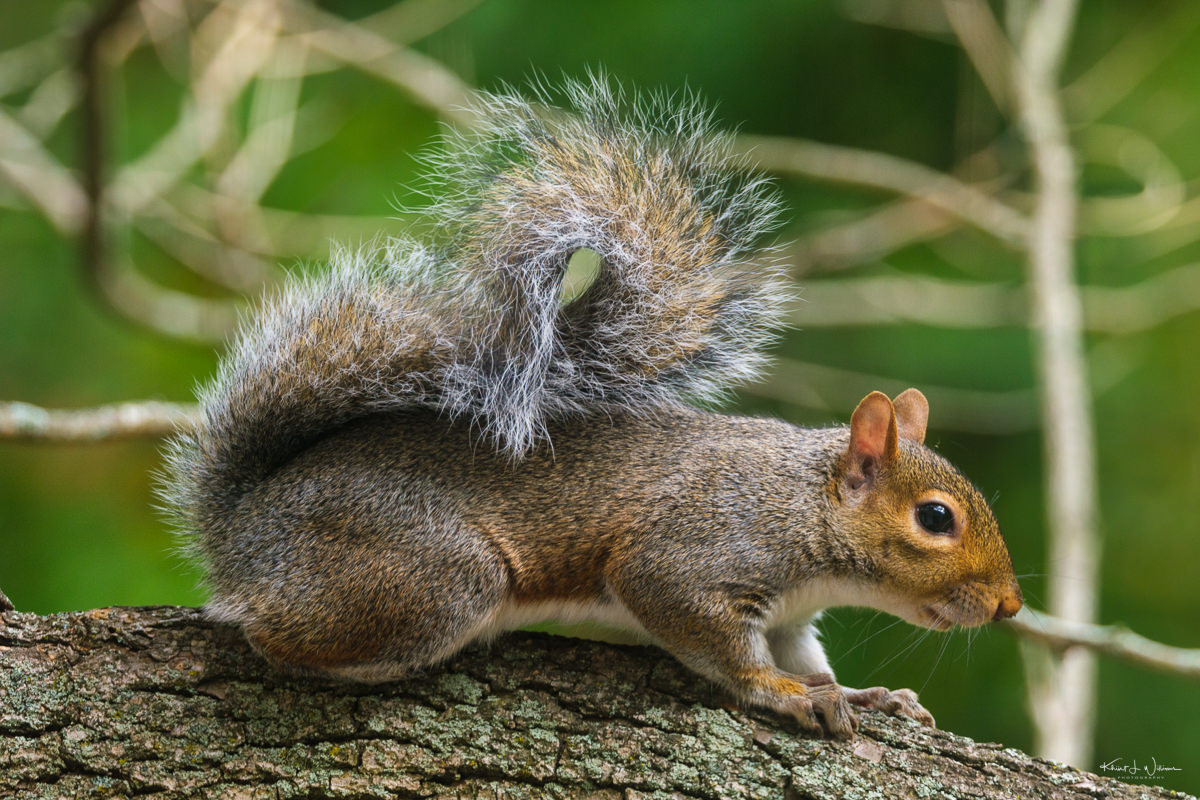Eastern Gray squirrels are agile climbers of trees, and I often see them leaping from branch to branch.
Montgomery Township, New Jersey has two common squirrel species: the Eastern Gray Squirrel (Sciurus carolinensis) and the Eastern Fox Squirrel (Sciurus niger). The ones I see in my backyard are the Eastern Gray Squirrel. I don’t think I have seen any Eastern Fox Squirrel.
Eastern Gray squirrels are agile climbers of trees, and I often see them leaping from branch to branch. The Eastern Gray Squirrels have adapted to suburban and urban environments. This Eastern Gray was on the tree that holds the bird feeder, trying to get a meal. It must have been a frustrating and disappointing experience. The bird feeder is squirrel-proof.
No squirrels, chipmunks or raccoons are on the islands of St. Vincent and the Grenadines, where I lived in the Eastern Caribbean. The only animals I remembered scampering in the trees were indigenous birds and anole (Anolis trinitatis) lizards. The largest wild mammals are mongoose, small terrestrial carnivorous mammals from Asia introduced by the colonial powers to eradicate the native snakes. The Mongoose has harmed native bird populations. They are elusive, and I have never seen one.
The Eastern Gray Squirrel has fur with a white belly, although some individuals may have slight colour variations. The grey squirrel is an invasive species in the European Union and cannot be imported, bred, transported, commercialised, or intentionally released into the environment.
Black squirrels are a melanistic variant of the Eastern Gray Squirrel. I have occasionally seen black squirrels in some parts of Montgomery Township (including my backyard) but more often in Princeton Township. Black squirrels are much more common in the Midwest, and I have even seen them in Niagara Falls, Canada. Black squirrels have an all-black fur coat.
Shaan noticed this individual in the tree outside the window while we talked at the kitchen table. The squirrel looked at us, making a barking noise as we watched. It seemed irritated. After a few minutes, I grabbed my camera and super-telephoto lens and stepped onto the deck in the backyard. Soon after I took this photograph, the squirrel scampered down the tree and ran off into the bushes in the backyard. Shaan noticed that it favoured one of its hind legs. That could explain the growling. We surmised that the squirrel was hurt and afraid.
@khurtwilliams/111409320473404677">




